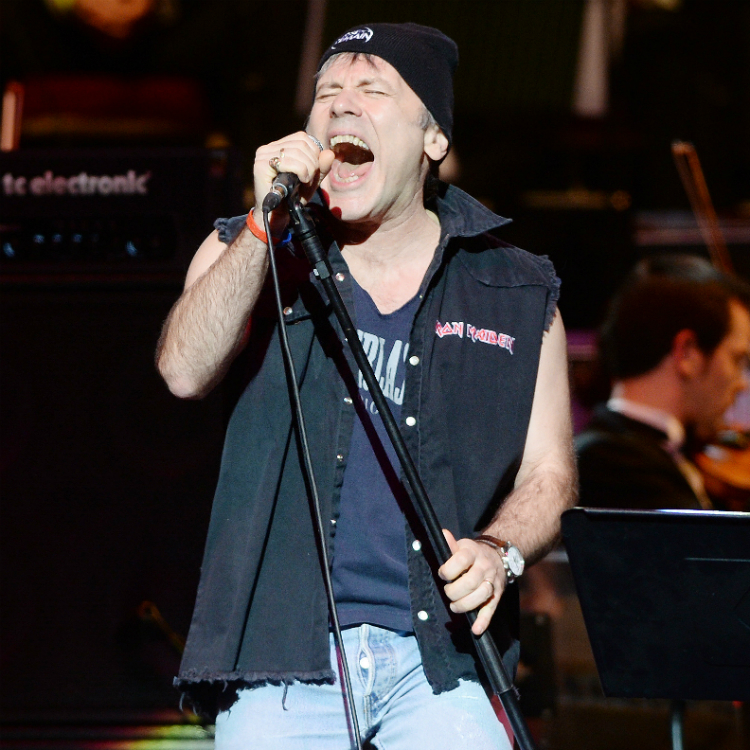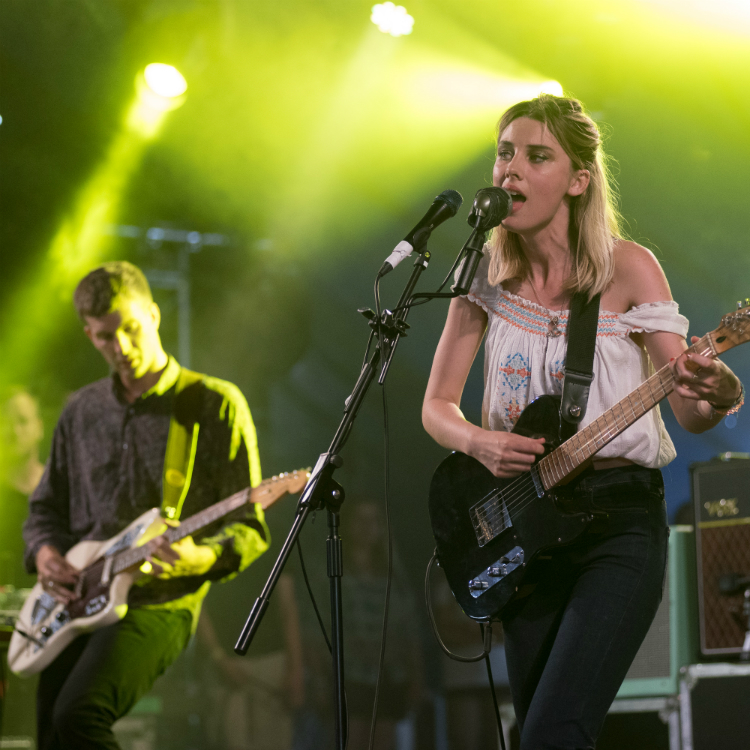 Photo: Richard Gray
Photo: Richard Gray
After a day of searching, we found more incredible arts spaces tucked in cosy, far flung corners of Latitude Festival. Here are the best bits of arts and culture we experienced at Latitude Day Two.
Music and Film Arena: Station to Station (film)
“It’s not a package, it’s not a system, it’s something that changes and evolves.”
Created by Doug Aitken, Station to Station is a 4,000 mile train ride, of 62 one minute films. With neon go-faster-stripes on the side, the train coasts through the wild plains of America, Atlantic to Pacific, where artists and contributors tell the story of the work, of the journey, of life.
Coming in short but precise bursts, this is a film not only documenting, but recording the process of happenings where anything can occur. In one carriage, flamenco dancers perform with the absence of a crowd but to by passing landscape. In another, Cold Cave record to vinyl. All of this is going on while the train is in transit, combining rolling footage and live action of artists.
With relentless sharp cuts, there’s no question that Station to Station is visually and conceptually dynamic, and complimented by an electro-funk soundtrack slowing and swelling in the blink of an eye.
Didactic yet accessible, this is must see.
Station to Station is showing at the Barbican Centre, accompanied by an exhibition of the same title, until 26July.

Pick of the Pleasance Present: Pipeline Theatre: Spilikin, A Love Story
Could you love a humanoid robot?
Sally is a forgetful, foul-mouthed 60 or 70 something year-old woman who lives alone, until a humanoid robot moves in to keep her company. This story exists in the past and the present, drawing on Sally’s flash back memories played out through a split stage, shared with her 18-year-old self and 17-year-old Raymond, her future husband.
The two teenagers are an unlikely love match. Her, "arrogant and facetious”, a tear-away who likes to think she could be the next Debbie Harry. Him, a "brainiac", into algorithms and algebra who prefers robots to humans; "robots are perfect, they never get ill”. Their angsty awkwardness provides laugh out loud moments in an otherwise emotional tale. Music from Blondie intersects the scenes, at other times, trickling and crackling sounds create tension and intrigue.
The script is purposefully and effectively repetitive, gradually and subtlety Sally’s story builds with moments of confusion, and word replacement takes the place of word remembrance as she becomes susceptible to human “design flaws”. Her interaction with the robot is aggressive and resistant initially, but jerkily subsides as emotional dependence sets in.
This fraught but fun story is gripping and provocative, not to be missed.
Spilikin, A Love Story will be resident in the Jack Dome at Edinburgh Fringe Festival 5-31 August.

Wellcome Trust Hub Present: Prof. Anil Seth, Sackler Centre: The New Science of Consciousness
We’ve all heard the phrase, ‘you know how the world works’. Do you know how your brain works to create the experience of the world? Copernicus solved the mystery of our place in the universe, and Darwin told us where we come from. But is that where the story of our existence ends?
Clamber uphill to a distant but cosy corner of the Faraway Forest and you’ll discover the Wellcome Trust Hub, hosting the calm and friendly faced Professor Anil Seth from the Sackler Centre, a leading institute for Consciousness Science. Bringing us long standing theories and the latest neuroscience research, we are invited to delve deep into the inner workings of the brain - electrical impulses aside, and begin to deconstruct one of the most mysterious natural machines; the human brain.
With concepts seemingly so complex that the thought of it is enough to make your brain melt, Seth delivers a considerately paced and perplexing talk- thankful accompanied with colourful and visually varied on-screen aids. Seth offers fun and fascination.
In a nutshell, what can we tae away from out time with Seth?
You receive information about the world through your senses- but that’s an overload to translate. How do you get around this? Your brain generates, guesses and fills in any gaps in information by inferring what could be there. In short, what you see when you look at something, anything, isn’t necessarily what that things looks like. Your brain understands and computes visual information in an impressionistic way, not in HD. There’s more.
You might think there is one central part of the brain that controls the rest of it, but no. There is no conductor at the front pointing and waving a stick to summon activity, instead is works like a jazz group, no central conductor yet it all works together in harmony.
And most importantly, not everything tastes like chicken. According the Seth’s taste buds, the brain tastes like tofu.







.jpg)





























